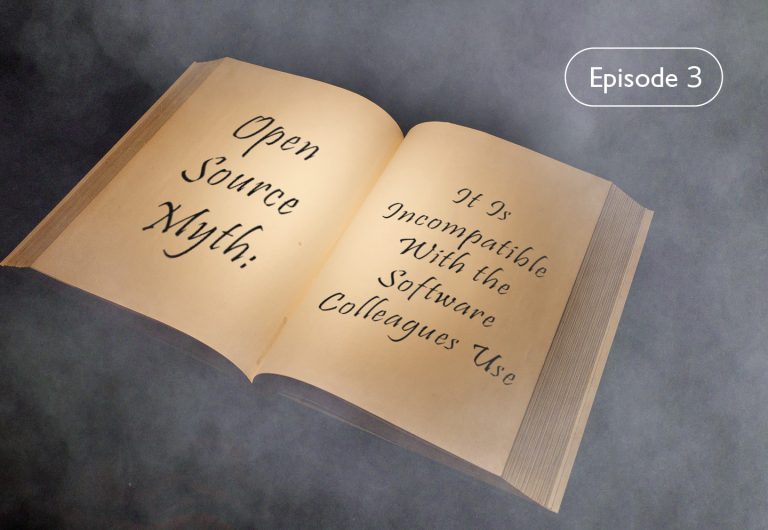Open Source Myth: That It Will Be Incompatible With the Software Colleagues Use

People who spread fear through this myth are enforcing a software monoculture, which is just as bad for organizations as crop monocultures are for agriculture.
Most companies nowadays use open formats, so colleagues won’t even notice if you’re using an open source tool to share files and send messages to them. The companies have realized that opening their formats is good for business. So is providing an application programming interface (API) to make it easy for others to build on their tools. When third parties add new features, it makes the products more useful and ultimately brings more customers.
Furthermore, when a company adopts a standard, it saves money that would otherwise be spent developing a proprietary format and the programs needed to manipulate it.
Most vendors also offer web-based interfaces that work just fine on any operating system.
You really don’t have to worry about matching every feature in a Microsoft Office file, or some other proprietary product, unless your team uses some very new and arcane feature. Open source projects are very good at tracking and matching new features for Microsoft Office in particular. Its formats are now nominally open source (although they’re very complicated and hard to reproduce).
Even enforcing a monoculture can be very expensive in a closed-source environment. A company may standardize on a particular version of an office package, or even features inside of that office package, to make sure their documents are compatible. However, when a new feature from a new version inadvertently appears in a document, the rest of the people in that company may have to upgrade to that new version in order to edit that document, costing a lot of money. With free and open source software, the new version can be distributed to the other users without license fees.
Some proprietary vendors still jealously guard their formats, which they make obscure and unreproducible. Stay away from these products. Rest assured that the vendor will eventually go out of business, change their business model, or be acquired by a competitor, and leave you at best 12 or 18 months to switch. Your data is at risk.
There are also a few tools that are released for Windows or the Mac and don’t have Linux equivalents. But you’d be surprised how many vendors support Linux now.
Some incompatibilities have less to do with the software itself as the way it is used. The use of default, proprietary fonts, which are available on only specific platforms, may cause pagination differences in documents that depend on duplicate pagination. Legal documents, as an example, often are referred to by “paragraph 3 of page 8,” and if different fonts are used, the pagination may be off.
To solve this, use freely distributed vector fonts in your documents, ensuring that the documents will paginate the same way every time. Some PDFs embed their fonts, so that any screen or printer can use those same fonts.
Other incompatibilities happen through the use of proprietary macros written in a non-standard, proprietary language, especially in spreadsheets. A solution to this incompatibility is to use a spreadsheet program that’s available on every platform you use now or will be likely to use in the future.
<< Read the previous post of this series | Read the next post of this series >>
